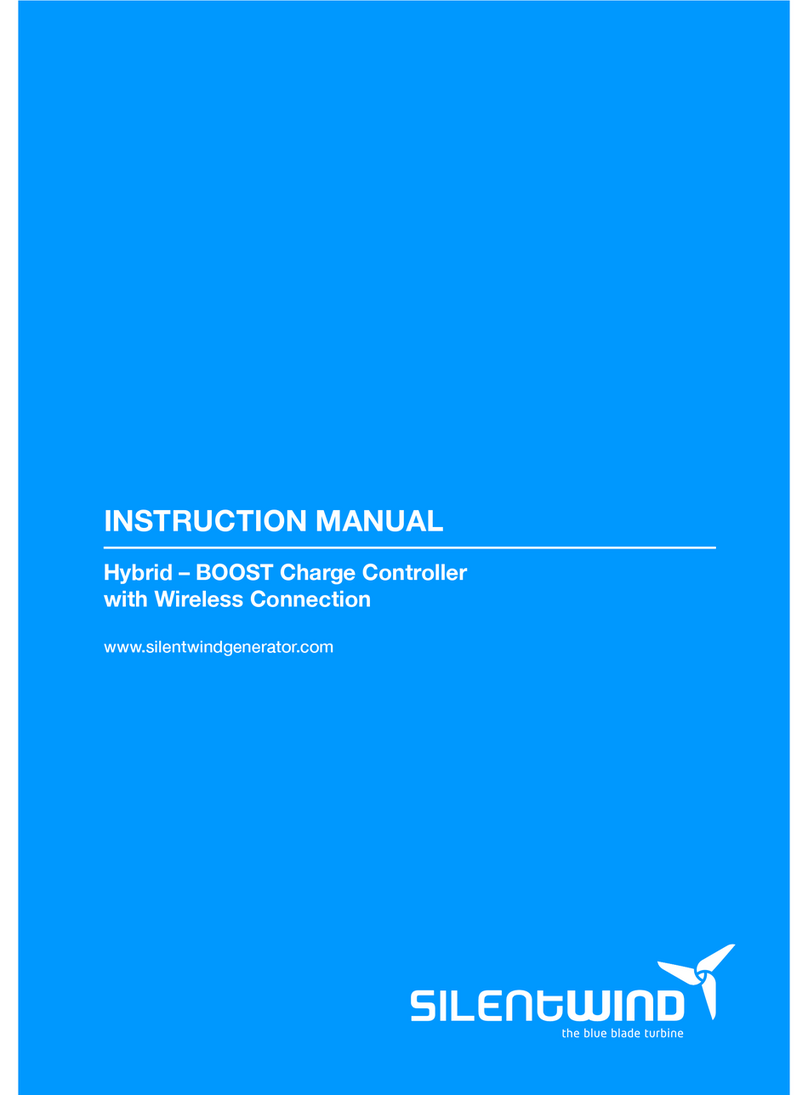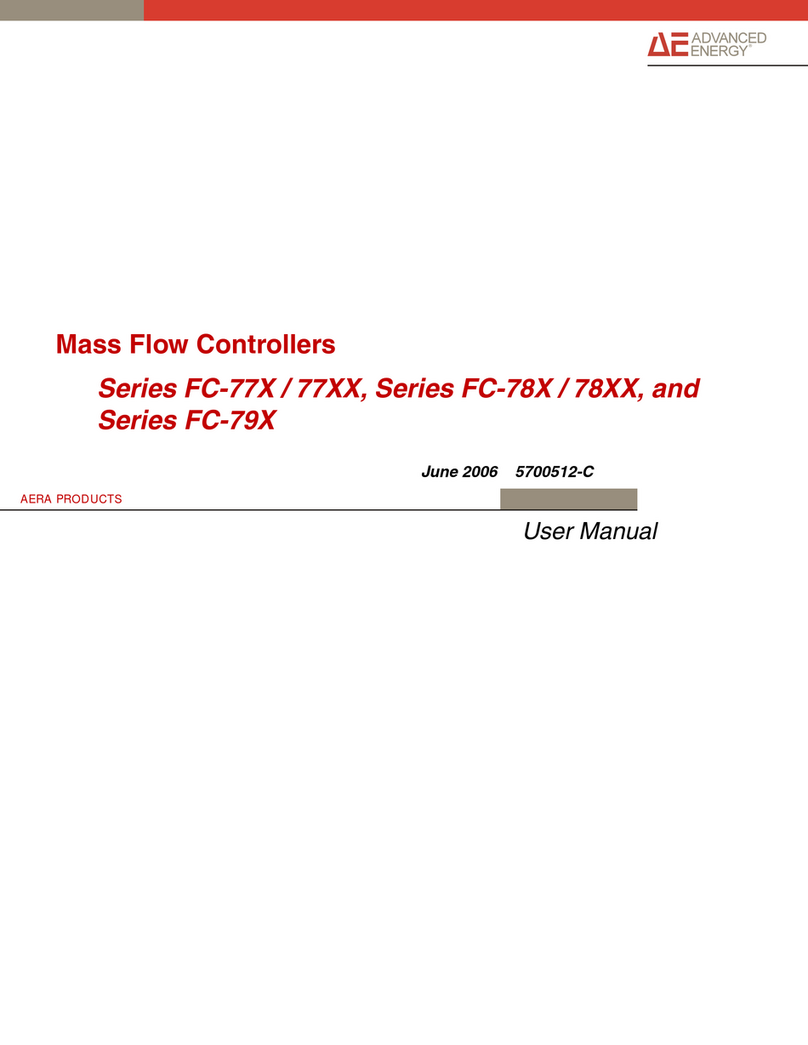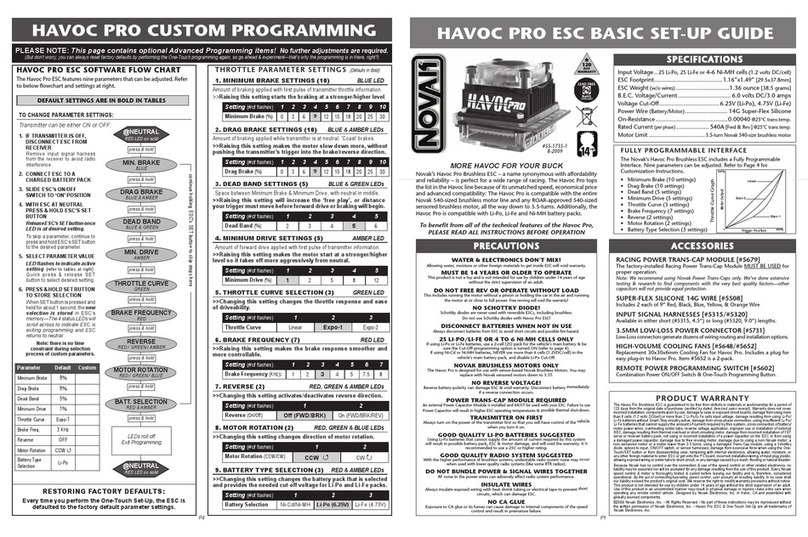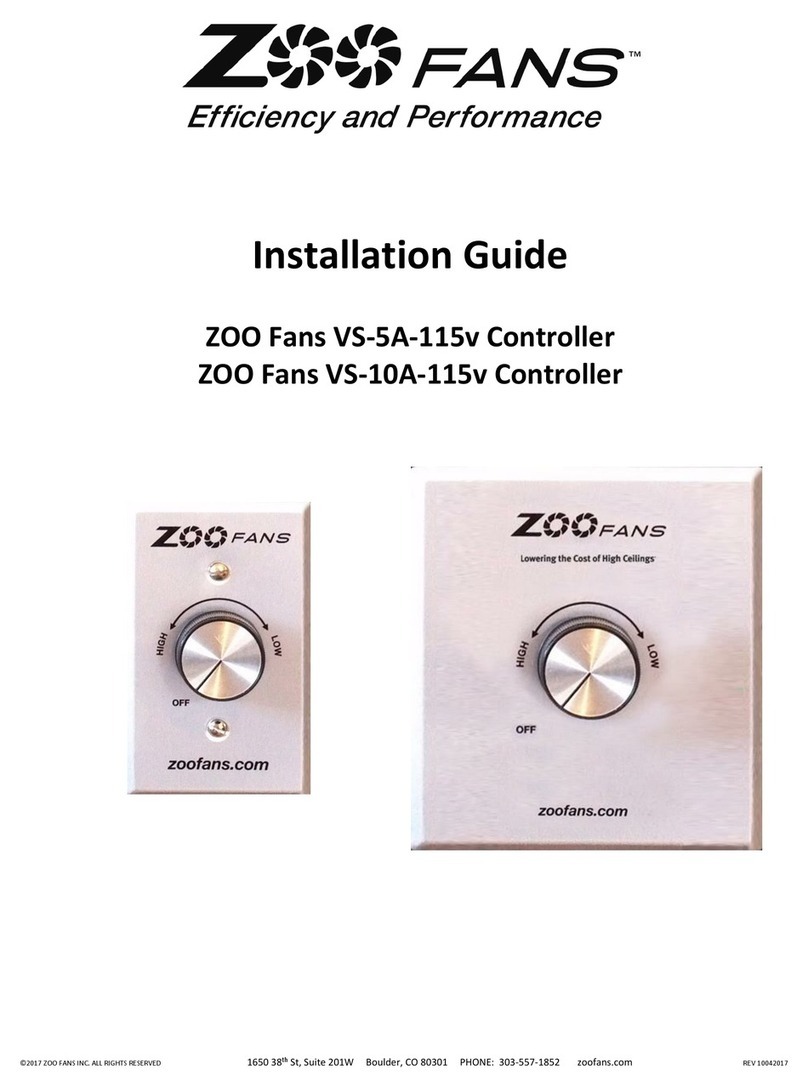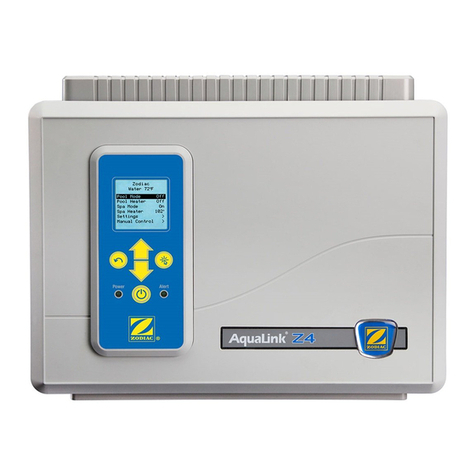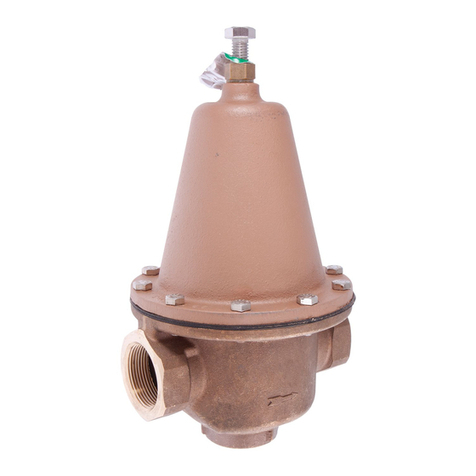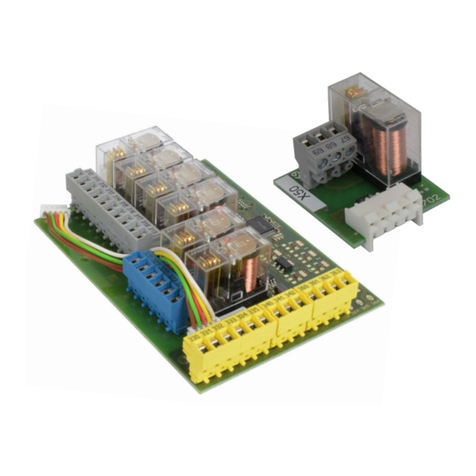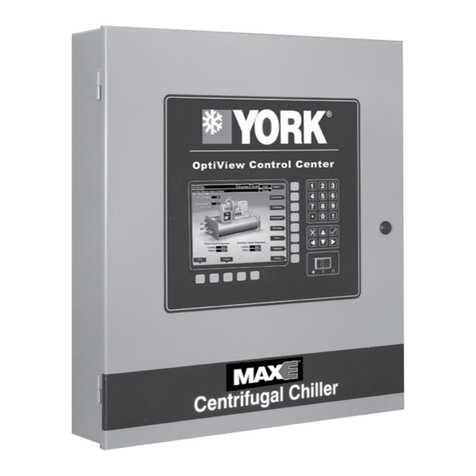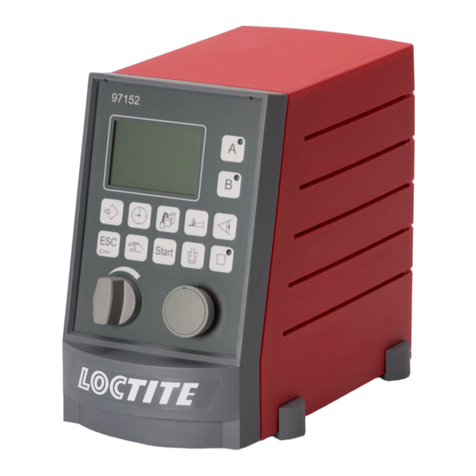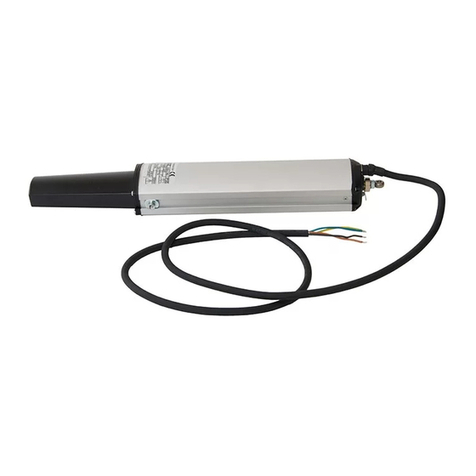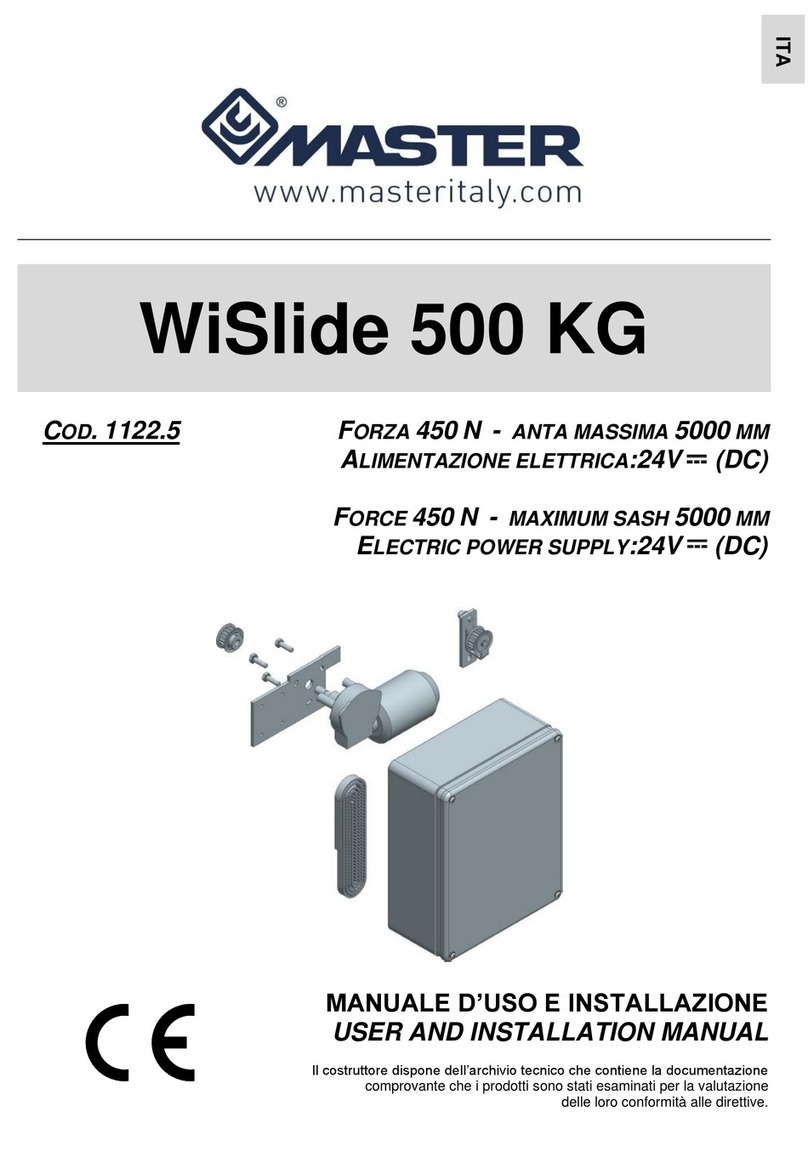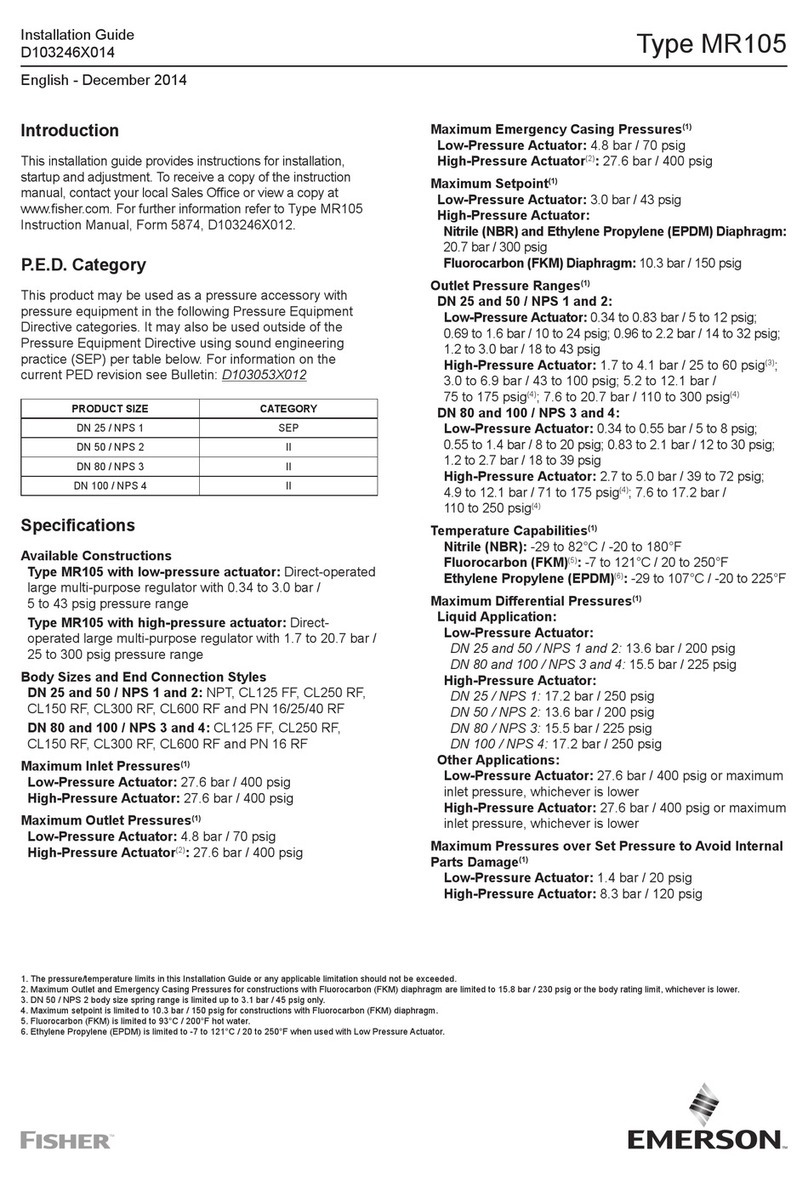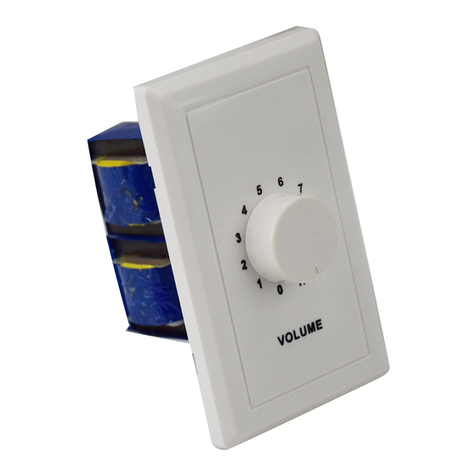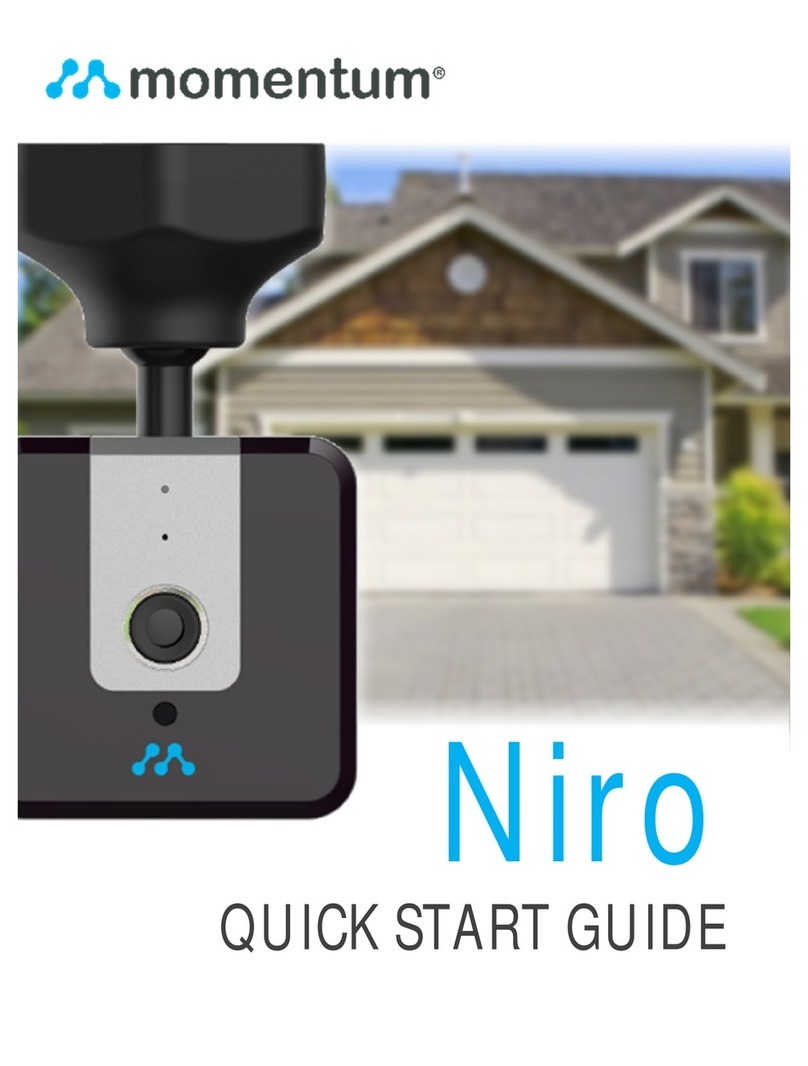SilentWind MPPT HYBRID BOOST CHARGE CONTROLLER User manual

MPPT HYBRID BOOST CHARGE CONTROLLER Rev.1
USER MANUAL
INSTALLATION –OPERATION
February 2019

MPPT Charge Controller User Manual - Feb. 2019 2

MPPT Charge Controller User Manual - Feb. 2019 3
HYBRID BOOST CHARGE CONTROLLER Rev.1 - MPPT
Congratulation! You have bought a high-quality hybrid charge regulator.
The Hybrid Boost Charge Controller is specially developed for the Silentwind generator.
The Warranty Terms are described in a chapter of this manual. For traceability under the warranty,
please register the Hybrid Boost Charge Controller on our website: www.silentwindgenerator.com
Registering your Hybrid Boost Charge Controller has the following benefits:
-Confirmation of your ownership and safety notifications: by keeping a record of your
registration, we will be able to trace your product and contact you quickly if necessary;
-Product information news: choose to be among the first to hear about our latest product,
helpful advice or product developments
If you have any questions or comments, do not hesitate contact us:
Rulis Eléctrica, Unip. Lda
Loteamento Industrial de Linhares, Lote 19
PT-4805-486 Santo Estevão de Briteiros / Guimarães
Portugal
Phone: 00351-253-572763
Fax: 00351-253-572764
E-mail: info@silentwindgenerator.com
Business Hours:
Monday to Friday: 8h00 to 17h00 GMT + 0:00
Welcome to Silentwind family!
The CE marking is a mandatory compliance requirement in EMEA and the UK and although it is self-certified,
testing and evidence to support that testing is preferred from an independent test house.
Machinery Directive 2006/42/EC, Low Voltage Directive 2004/95/EC, Electromagnetic Combability Directive
2004/108/EC. The report and the declaration of conformity are available for inspection on request.

MPPT Charge Controller User Manual - Feb. 2019 4

MPPT Charge Controller User Manual - Feb. 2019 5
Index
1. IMPORTANT SAFETY WARNINGS AND PRECAUTIONS.................................................................... 6
2. PRESENTATION ............................................................................................................................... 7
3. TECHNICAL DATA ............................................................................................................................ 8
3.1 HYBRID BOOST CHARGE CONTROLLER–ELECTRICAL DATA................................................... 8
3.2 HYBRID BOOST CHARGE CONTROLLER - MECHANICAL DATA................................................ 8
3.3 INSTALATION NOTES.............................................................................................................. 8
3.4 PRODUCT STRUCTURE............................................................................................................ 9
3.5 LCD INFORMATION .............................................................................................................. 10
3.6 LCD DISPLAY ......................................................................................................................... 12
3.7 LOAD OUTPUT MODES......................................................................................................... 13
4. SAFETY PRECAUTIONS................................................................................................................... 13
5. INSTALLATIONS............................................................................................................................. 14
5.1 PACKAGE .............................................................................................................................. 14
5.2 RECOMMENDATIONS........................................................................................................... 14
5.3 REQUIRED TOOLS AND EQUIPMENT.................................................................................... 14
5.4 CABLES AND FUSES .............................................................................................................. 15
5.5 PHYSICAL INSTALLATION...................................................................................................... 16
5.6 ELECTRICAL INSTALLATION .................................................................................................. 17
5.6.1 SOLAR PANELS.................................................................................................................. 18
5.6.2 SILENTWIND GENERATOR................................................................................................ 21
5.7 SETTINGS.............................................................................................................................. 21
5.7.1 SCAN BUTTON.................................................................................................................. 22
5.7.2 SILENTWIND CONTROLLER APP ....................................................................................... 24
5.8 CHECK LIST ....................................................................................................................... 26
6. OPERATION................................................................................................................................... 26
7. RESET............................................................................................................................................. 27
8. TROUBLESHOTTING ...................................................................................................................... 28
8.1 No display on LCD................................................................................................................. 28
8.2 No output............................................................................................................................. 28
8.3 No charging .......................................................................................................................... 29
9. WARRANTY ................................................................................................................................... 30

MPPT Charge Controller User Manual - Feb. 2019 6
1. IMPORTANT SAFETY WARNINGS AND PRECAUTIONS
Before using the controller, please read all instructions and cautionary markings on
the unit and this manual. Print or save the manual where it can easily be accessed.
➢Please study the information thoroughly before starting to install the Hybrid Boost
Charge Controller.
➢This manual should always be kept near the Hybrid Boost Charge Controller.
➢Silentwind cannot be held liable for any direct or indirect loss or damage, due to
an incorrect operation or improper device handling.
➢To avoid a risk of fire and electric shock, make sure the existing wiring is in good
conditions and that the wires are connected tightly
➢Do not disassemble the Hybrid Boost Charge Controller. Warranty will void.
➢Never attempt to repair or disassemble the Hybrid Boost Charge Controller or its
parts as there is a danger of fire, electrical shock and possibly death.
➢Do not change the electrical components and parts by yourself, only Silentwind’s
authorized technicians are able to repair the Hybrid Boost Charge Controller.
➢Wrong settings can permanently damage your batteries, your charge controller
and your wind generator.

MPPT Charge Controller User Manual - Feb. 2019 7
2. PRESENTATION
The Hybrid Boost Charge Controller is a combined wind and solar charge regulator with an inbuilt
micro-controller. The Hybrid Boost Charge Controller enables you to install the Silentwind generator
and solar panels to a maximum power of 300 Watt (peak), that are connected to the deep cycle output
can be automatically switched OFF or ON by a deep cycle protection function.
All operation parameters can be seen on an LCD-display or on a tablet or smartphone over the wireless
connection (Bluetooth). You can set all operating parameters directly on the Hybrid Boost Charge
Controller or over the Silentwind APP available for Android and iOS devices.
The Silentwind generator is a 3 phase AC voltage and in the Hybrid Boost Charge Controller AC is
transformed to DC voltage. The voltage of the Silentwind generator and the Hybrid Boost Charge
Controller must be chosen in accordance with the system voltage.
All types of batteries (Gel, AGM, Acid an Lithium) can be charged.
The Hybrid Boost Charge Controller features:
Solar and Wind - Hybrid charge controller.
Full MPPT point adjustable.
Integrated electronic brake –charge limitation and storm brake.
LCD-display of all relevant working data: W, A, V, Ah.
Seven models of load output settings (not available on 48V version).
Cable connections - screw terminals.
Wireless communication
External wireless antenna for a wider wireless range

MPPT Charge Controller User Manual - Feb. 2019 8
3. TECHNICAL DATA
3.1 MPPT HYBRID BOOST CHARGE CONTROLLER–ELECTRICAL DATA
System voltage
12 VDC / 24 VDC / 48 VDC
Max. power input wind generator
600 Watt
Max. current input of the wind generator
40 A / 30 A / 15 A
Max. power input solar
300 Watt
Max. current input solar
20 A / 10 A / 5 A
Max. open circuit voltage input of the solar panel
48 VDC / 48 VDC / 96 VDC
Max. total charge current
60 A
Max. switch off current at LOAD-output (Load)
2 x 10 A
Max. voltage adjustable for the battery types
Acid, Gel, AGM and Lithium
LCD + LED displays
W, A, V, Ah
3.2 MPPT HYBRID BOOST CHARGE CONTROLLER - MECHANICAL DATA
Weight
2.30 kg
Package dimensions
220 x 150 x 83 mm
Cover protection class
IP52
3.3 INSTALATION NOTES
The machine should be kept indoors and well ventilated
Environment temperature
-20 ˚C - +40 ˚C
Altitude
< 1000 m
The space around the device has no other items within
30cm
Can only charge batteries in the same rated voltage range
The charge controller can only be connected to the wind turbine and the PV in the
same rated voltage range

MPPT Charge Controller User Manual - Feb. 2019 9
3.4 PRODUCT STRUCTURE
1
LCD Display
2
Brake light
3
Button
4
Temperature compensation sensor connector
5
Battery terminals
6
Silentwind terminals
7
Solar Panel terminals
8
Load terminals
9
External Antenna connector
10
M4 screw install hole

MPPT Charge Controller User Manual - Feb. 2019 10
3.5 LCD INFORMATION
Name
Icon
Status
Rotate means wind turbine works normally.
Wind turbine
BRAKE
Brake by hand.
Day.
Solar
Night or Panel Solar is not connected.
Charging.
Battery
Fully charged.
Flickering for over voltage.
Stop flickering when it recovers from over voltage.
Flickering means over-discharge.
Output normally.
Load
No output. Flickering for overload.
Flickering means short circuit.

MPPT Charge Controller User Manual - Feb. 2019 11
Name
Icon
Status
Light control on/off.
Light control on, time control off.
Light control on voltage.
Load output
When “ON”& “LOAD “appeared, load is
always on.
Control mode
Light control off voltage.
Show “OFF”and time. The time is the control off
time.
Show 2 loops relatively.
Parameters display.
Others
“SET”
Set icon. When it appears, you can set related
parameters by press the browse button.
Unload indicator light
When the machine is in unload or brake status, the
indicator light is red. The light is off when it operates
normally.

MPPT Charge Controller User Manual - Feb. 2019 12
3.6 LCD DISPLAY
Interface
Introduction
Display Interface
Interface
Introduction
Battery Voltage
Accumulative total
electricity
consumption
Accumulative total
Solar generation
capacity
Accumulative total
wind turbine
generation
capacity
Wind turbine
Voltage
Wind turbine
Current
Wind turbine
Power
Solar Panel voltage
Light control off
voltage
Light control on
voltage
*Load 2 Control off
Time
Load 2 output mode
*Load 1 off time
Solar Panel current
Solar Panel power
Load 1 current
Load 2 current
Load 1 output
mode
* It will only be displayed if the setting is turned On.

MPPT Charge Controller User Manual - Feb. 2019 13
3.7 LOAD OUTPUT MODES
Load output modes optional that can be set on the LCD display or software
V1
Light control on / off
V2
Light control on, time control off
V3
Light control on/off, time half power
V4
Light control on, time half power, time
control off
V5
Constant On
V6
Constant Off
V7
Constant half power
4. SAFETY PRECAUTIONS
Our primary concern when we developed the Hybrid Boost Charge Controller was your safety. The
information provided is to ensure your safety during installation, operation, and in case of trouble.
Avoid using the Hybrid Boost Charge Controller in direct sunlight, sun exposure, rain, humidity,
acid fog and dust.
Do not use the Hybrid Boost Charge Controller in a place where has flammability and explosive
gas/articles. Beware of flames and sparks.
If you have any additional questions please contact us.
Please keep in mind that liquid acid batteries can emit dangerous explosive gas. If the
place where the Hybrid Boost Charge Controller is installed is close to this kind of
batteries, unsure that has efficient ventilation.
WHEN WORKING IN THE SYSTEM:
1st Disconnect the Silentwind generator (to avoid risks, once you remove the 3 wires
from the generator, please put at least 2 wires from the generator together to cause
a short circuit and slow down the rotation of the blades).
2nd Disconnect the solar panels if available.
3rd Disconnect Battery. This is very important. Otherwise the Hybrid Boost Charge
Controller will be damaged.

MPPT Charge Controller User Manual - Feb. 2019 14
5. INSTALLATIONS
Before installation the Hybrid Boost Charge Controller,find a suitable position indoor to avoid water
entering the controller. The Hybrid Boost Charge Controller must be installed in a place with good
ventilation and heat dissipation.
Plan your installation carefully.
Follow the correct assembly sequence:
1st Charge controller to battery connections
2nd Solar Panels to the charge controller
3rd Wind generator to the charge controller
5.1 PACKAGE
The package includes:
1 unit - Charge controller
1 unit - External Sensor cable
1 unit –External antenna
5.2 RECOMMENDATIONS
Make sure all wires are placed in the correct position or it will damage the charge
controller.
The three AC cables need to have the same cross section and the correct mm²/AWG.
A damaged cable is a severe safety risk. Wires with inadequate cross section can cause fire.
Make sure the electrical connections (crimping) are done 100%.
Any voltage drops can influence the control of brake functions.
Use tinned copper cables for marine installations.
When connecting the Hybrid Boost Charge Controller to the battery, sparks can occur.
A short circuit is to be avoided.
Always ensure enough ventilation in battery location.
5.3 REQUIRED TOOLS AND EQUIPMENT
Cable with the required length and diameter to connect the three AC phases from the
Silentwind generator to the Hybrid Boost Charge Controller.
Connectors for the three-phase cables to connect to the wind generator.
Red and black cable to connect the Hybrid Boost Charge Controller to the battery.
Joint connector for battery cable.
Fuse.
The proper cable sections are listed in the following chapter.

MPPT Charge Controller User Manual - Feb. 2019 15
5.4 CABLES AND FUSES
The required cross section of the wires depends on their length and the rated voltage of your system.
Select the location of the mast and measure the distance from the mast top to the battery. Select the
minimum cross section required in the basis of the following tables. The three AC cables need to have
the same cross section.
System voltage 12 Volt
Distance from wind generator to the charge controller (m)
0 - 9
10 - 19
20 - 29
30 - 44
45 - 69
70 - 110
Cable cross section mm2- AWG
6 –10
10 –8
16 –6
25 –4
35 –2
50 –1
Distance from the charge controller to the battery (m)
0 –9
10 –19
20 - 29
30 –44
45 - 69
70 - 110
Cable cross section mm2- AWG
16 - 6
24 - 4
35 - 2
-
-
-
System voltage 24 Volt
Distance from wind generator to the charge controller (m)
0 - 9
10 - 19
20 - 29
30 - 44
45 - 69
70 - 110
Cable cross section mm2- AWG
2.5 - 14
4 - 12
6 - 10
10 - 8
16 - 6
25 - 4
Distance from the charge controller to the battery (m)
0 –9
10 –19
20 - 29
30 –44
45 - 69
70 - 110
Cable cross section mm2- AWG
16 - 6
25 - 4
35 - 2
-
-
-
System voltage 48 Volt
Distance from wind generator to the charge controller (m)
0 - 29
30 - 79
80 - 99
100 - 150
Cable cross section mm2- AWG
2.5 - 14
4 - 12
6 - 10
10 - 8
Distance from the charge controller to the battery (m)
0 –29
30 –69
70 - 99
100 - 150
Cable cross section mm2- AWG
4 - 12
4 - 12
10 - 8
16 - 6-
For protection against high voltage spikes and/or an accidental short-circuit event, fuses must be
installed in the positive (red) wires to the battery. The required value of the fuse depends on the rated
current of the Silentwind generator and solar panels connected to the Hybrid Boost Charge Controller.
We recommend:
Silentwind generator
Max Current (A)
(Silentwind generator + Solar Panel)
Fuse (A)
12V
40 + 20
50 + 25
24V
20 + 10
30 + 15
48V
10 + 5
20 + 10

MPPT Charge Controller User Manual - Feb. 2019 16
5.5 PHYSICAL INSTALLATION
The Hybrid Boost Charge Controller should be installed in a wall using four screws with the panel
upright (if you can read the front panel text horizontally then this is correct).
The side panels and back are a heat sink to dissipate heat, which is why the orientation is important.
To guarantee the lifespan, it is suggested that the space around the device has no other items within
30cm.
1st Drill Size
2nd Fix the controller on the wall with M4 screw
3rd When fix the screw, try to shift the screw driver about 10angle

MPPT Charge Controller User Manual - Feb. 2019 17
5.6 ELECTRICAL INSTALLATION
Making an extension of the 3 cables AC, using a crimp
connector insulated will be necessary since the
Silentwind generator will be fixed in the mast and the
Hybrid Boost Charge Controller will not be fixed in the
same place.
If there is enough wind speed when
connecting Silentwind generator, this will
immediately generate electric power at
the end of the 3 AC-wires without being
connected to the Hybrid Boost Charge
Controller. Therefore, we recommend blocking the
Silentwind generator blades with a rope before
connecting the wires to the Hybrid Boost Charge
Controller
Install a fuse between the Hybrid Boost Charge Controller and the battery positive pole as
close as possible to the battery.
It is most important that you first connect the Hybrid Boost Charge Controller to the
battery with the right polarity. The confusion of plus (red) and minus (black) will
definitely destroy your Hybrid Boost Charge Controller.
After the connection of the battery you can connect the solar panel, the Silentwind generator and if
required, a Load Output with 10A maximum on Output 1 and 10A on Output2 with 10A maximum.

MPPT Charge Controller User Manual - Feb. 2019 18
5.6.1 SOLAR PANELS
Connect the terminals of solar panels to “SOLAR INPUT” terminals “+” and “-“on the Hybrid Boost
Charge Controller.
All Solar panels rated voltages on this chapter are open circuit voltages (Voc).
Check your solar panels datasheets for detailed information.
Do not exceed your charge controller’s maximum wattage, voltage and amperage.
12 Volt System
SINGLE PANEL
PARALLEL CONNECTION

MPPT Charge Controller User Manual - Feb. 2019 19
24 Volt System
SINGLE PANEL
PARALLEL CONNECTION
12V PANELS –SERIAL AND PARALLEL CONNECTION

MPPT Charge Controller User Manual - Feb. 2019 20
48 Volt System
24V PANELS - SERIAL AND
PARALLEL CONNECTION
12V PANELS –SERIAL AND
PARALLEL CONNECTION
This manual suits for next models
1
Table of contents
Other SilentWind Controllers manuals

